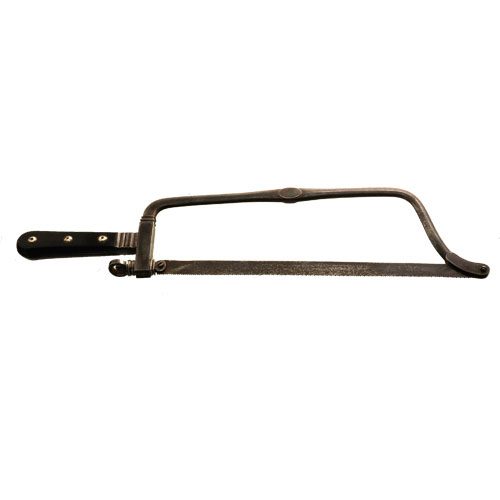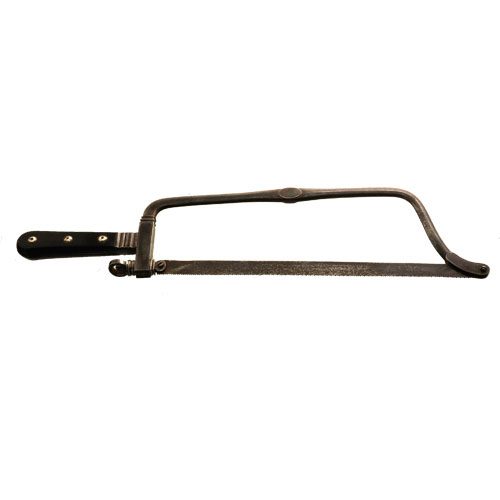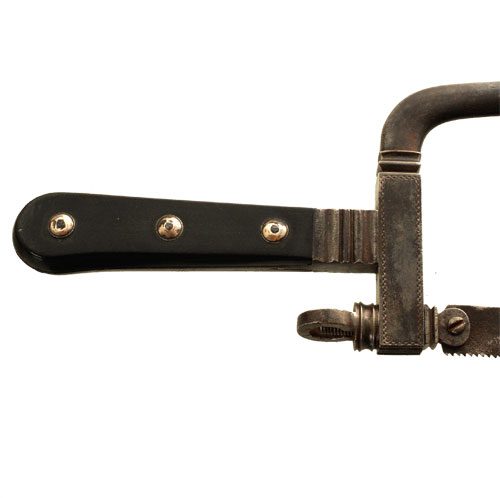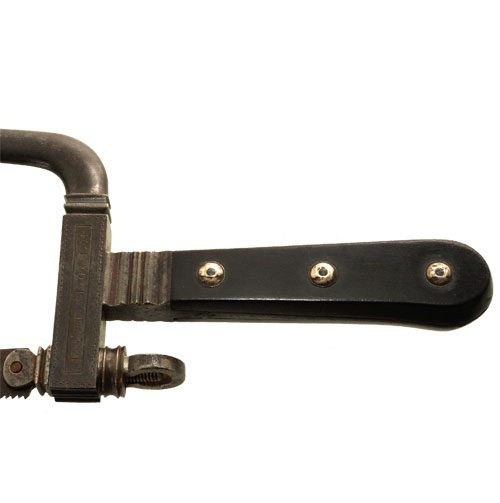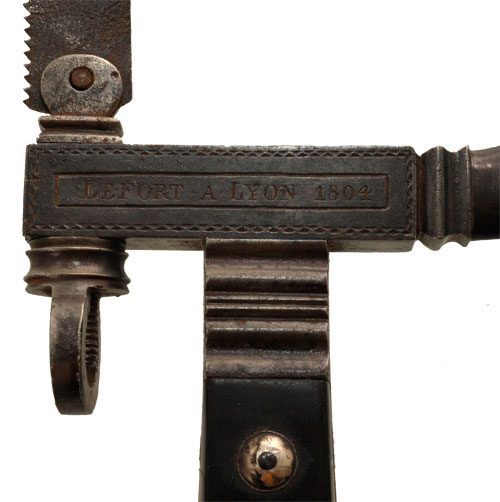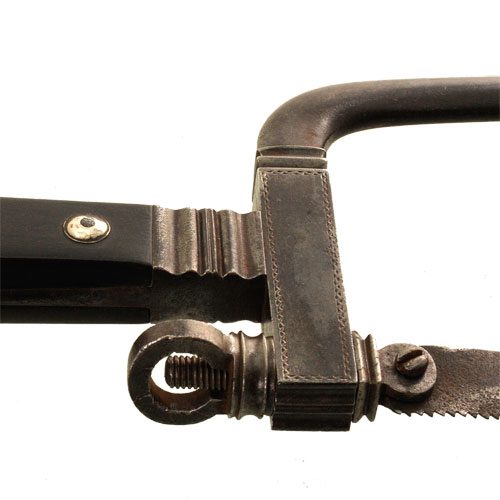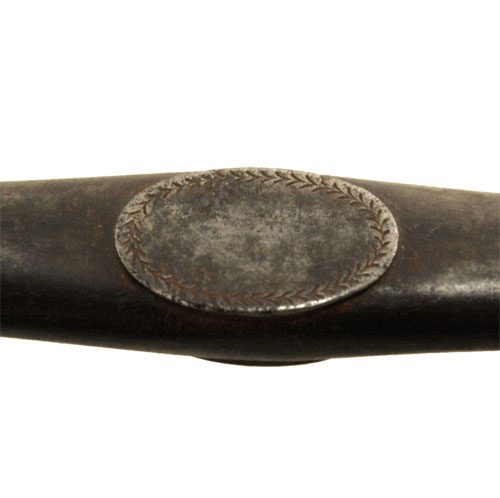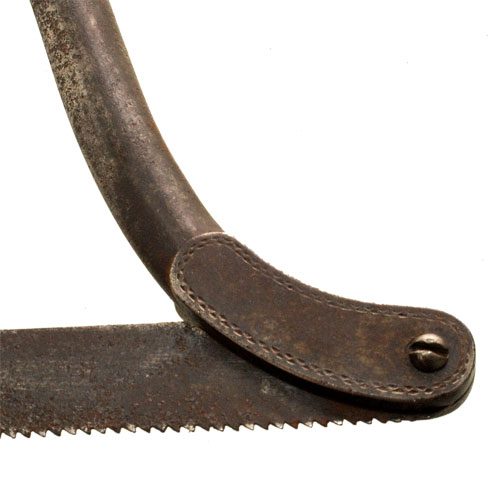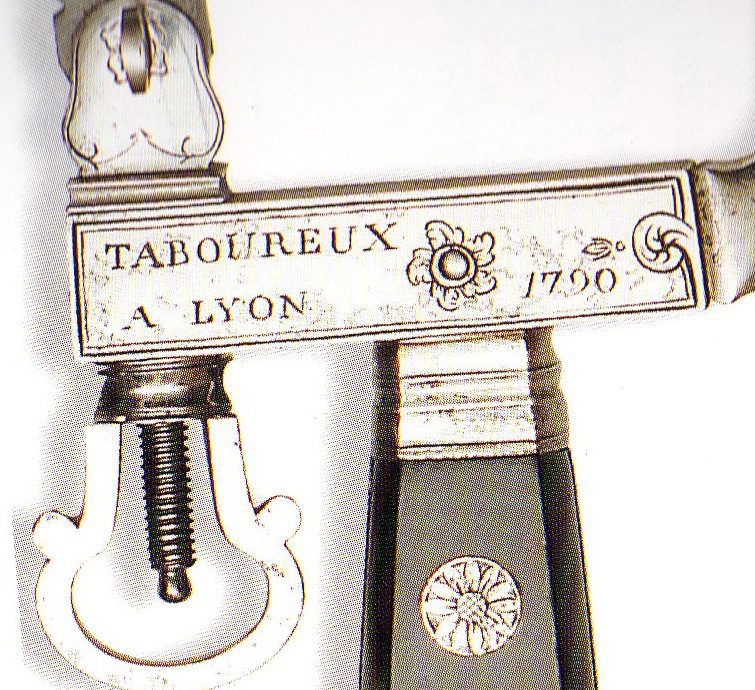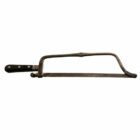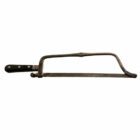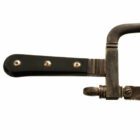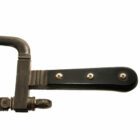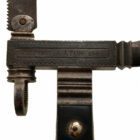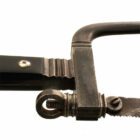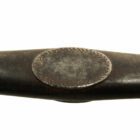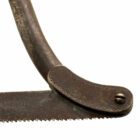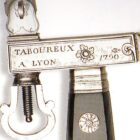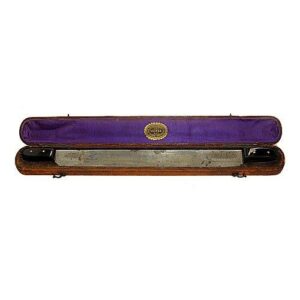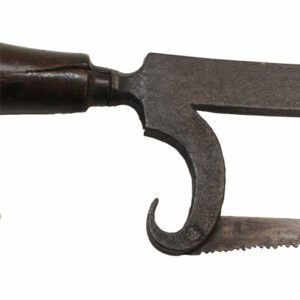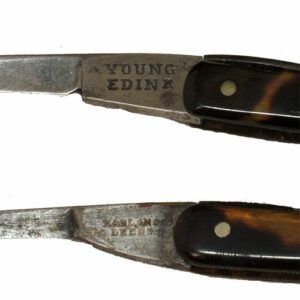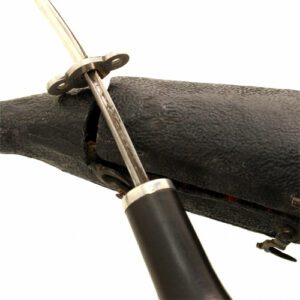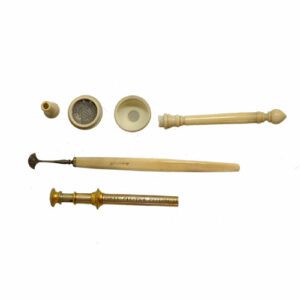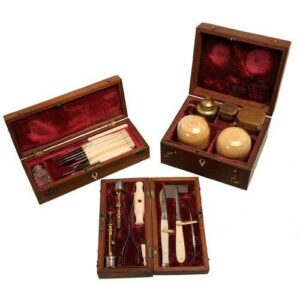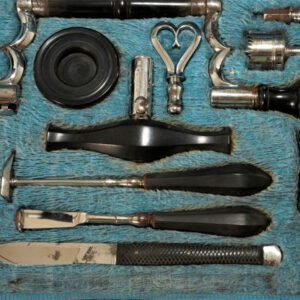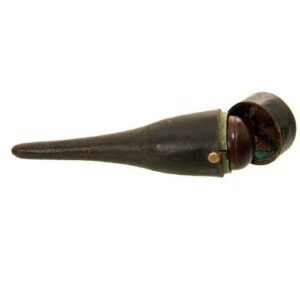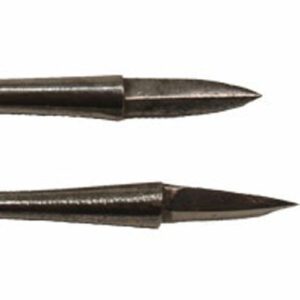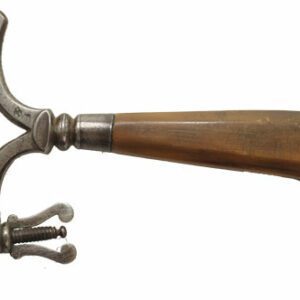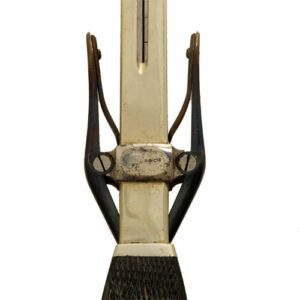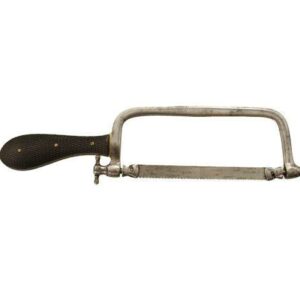Taboureux Lyon Amputation saw, C. 1790
On application
A nicely decorated bow framed amputation saw made by the cutler and surgical instrument ‘Taboureux a Lyon’ of 1804 and once owned by Doctor Pierre Lefort (1767-1843).
Taboureux was active around the 1790’s according to an earlier saw held by the by Museum of the History of Medicine and Pharmacy of Lyon. The saw is inscribed ‘Lefort A Lyon 1804’ which leads to Dr. Pierre Lefort, who was a member of the Legion of Honor, Paris correspondent of the Academy of Medicine and the holder of the prize in the Paris Faculty of Medicine for memory in communicable diseases.
Lefort was a brilliant doctor of the Navy at Mers born in 1767. At age 26 he started third class surgeon in the Navy. He started on the ship “l’Indomptable” in Brest. As navy doctor, he was a part of the heroic crew of the “Avenger”.
In his first campaign he witnessed the battles of June 1, 1794. Afterwards he was captured as a prisoner for three years in England. In 1797 he returned to France. Thanks to the knowledge acquired of the English during his imprisonment, he was appointed inspector of French prisoners. He founded a model school for those who had not his equal in France.
In 1799 Lefort was appointed as doctor first class of the French Navy, he continued to work in various hospitals and in the fleet. In 1801, after the Battle of Algeciras, he was sent to Gibraltar to negotiate the exchange of wounded prisoners. On the fateful day of Trafalgar, October 21 1805, Lefort was captured by the English, but got paroled after a few months.
After release he resumed his service in hospitals, realized medical studies, contributes to the Faculty of Medicine and received an important medical price. In 1808 Lefort was appointed chief physician of the first maritime district of the empire. In the capital city of Genoa, he suffered the blockade of 1814, then went to Martinique in the same function.
Because he was made suspicious of being a supporter of Napoleon he was banned to the United States, where he was staying for some time in the vicinity of New York, in the house that was occupied by General Moreau.
After being recalled to France, he was again appointed as a doctor of the king in 1826, Chevalier of the Legion of Honor and member of the Paris Academy of Medicine. He realized an important contribution to the fight against yellow fever. He died on January 13, 1843 at the age of 76, after a long life of service to others. He’s resting with his wife Mary Anne, who he met during his first capture in England, who died in 1864, in the Madeleine cemetery in Amiens.
The saw is in mint condition, Length: 50 cm.
See for reference the following website http://clystere.pagesperso-orange.fr/numero-pdf-download/clystere_n41_jui_2015VA.pdf . See fig 3 and 32 from the muséum of the history of medicine of LYON.
